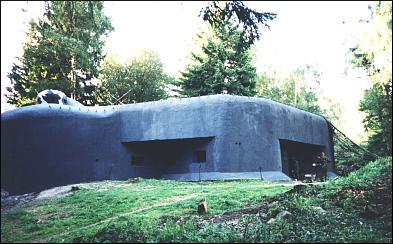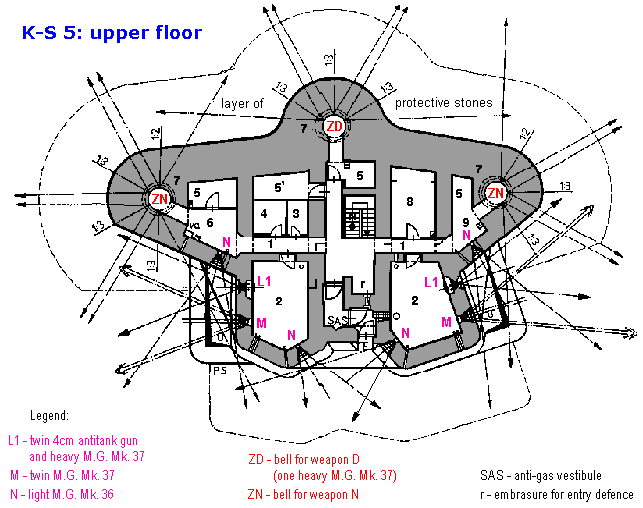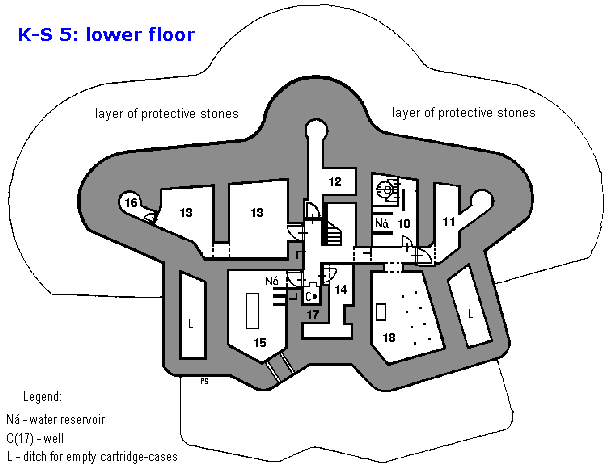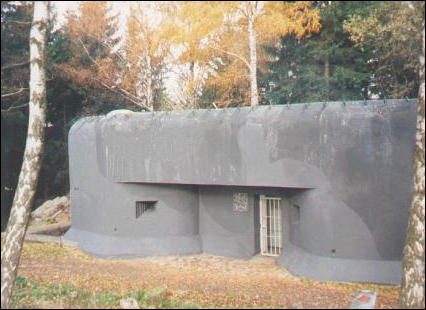| Czechoslovak Fortification 1938. |
Infantry Blockhouse K-S-5 "U potoka".
 Photograph of the infantry blockhouse K-S-5 "U potoka". View from the left. |
Upper Floor (Fighting Floor):

| Czechoslovak Fortification 1938. |
Infantry Blockhouse K-S-5 "U potoka".
 Photograph of the infantry blockhouse K-S-5 "U potoka". View from the left. |

| weapon | code name | calibre [mm] / [inch] |
range [m] |
rounds per minute |
|---|---|---|---|---|
| 4 cm anti-tank gun + M.G. Mk. 37 |
L1 | 47 / 1.850 7.92 / .312 |
max. 5800 300-2500 |
35 550 |
| 2x M.G. Mk. 37 | M | 7.92 / .312 | 300-2500 | 2 x 550 |
| light M.G. Mk. 26 | N | 7.92 / .312 | 200-1500 | 600 |
| heavy M.G. Mk. 37 | D | 7.92 / .312 | 300-2500 | 550 |

 Photo of infantry blockhouse K-S-5 "U potoka". View from the rear. |
05033 |
 |
Updated: 11th March 2002. Music: Bedrich Smetana - My Country, Tabor. MIDI file sequenced by Petr Cvikl. |